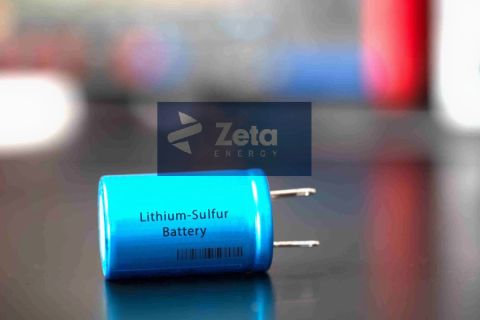Since 1927, when the Schlumberger brothers ran the first electric log in a French oil well, logging technology has evolved at a rapid clip. This is a service sector of the industry, driven by the hunger of operators for precise measurements of their subsurface reservoirs. Wells have become deeper, more complex and far more expensive, and loggers are competing keenly to provide reliable and telling data. Recent developments in logging owe much to the miniaturization of electronic components and the incredible evolution of computing power. Logging technology now reaches past traditional wireline applications to logging while drilling (LWD) services and logging with permanent sensors. Oil and Gas Investor recently talked to Tim Probert, Halliburton senior vice president, drilling and formation evaluation division, and John Corben, Schlumberger marketing manager for wireline services. They contributed their insights on the state of the art (and science) of well logging. Oil-based mud imaging A rapidly growing segment of the logging market is deepwater drilling, where the use of oil-base or synthetic-base muds is common. As operators have stepped up their use of these specialty mud systems, the providers of logging services have faced some stiff challenges. Conventional micro-resistivity tools do not work in such muds, as they are nonconductive. And, operators were loathe to forego the micro-resistivity readings, which many consider the backbone of a logging suite. "Imaging in nonconductive muds is crucial," says Corben. "There is a growing market for logging in wells drilled with environmentally friendly fluids." Previously, operators had only a couple of options: the oil-base mud could be pumped out of a borehole and replaced with water-base mud for the logging run. Or, if the mud system had a high enough conductivity, some rather rough resistivity readings could be collected. The service industry responded to this dilemma by developing tools that can image in nonconducting environments. The key was honing the ability to measure resistivity in a very small piece of a formation-about a few millimeters square-without being able to pass electrical current or measure voltage directly. Inductive techniques were the solution, with miniaturized components that could look at ever-smaller blocks of the formation. "The challenge is to continue to improve the resolution, and also to be able to look all the way around the borehole," says Corben. Magnetic resonance imaging One of the striking breakthroughs in logging in recent years has been magnetic resonance imaging, a technique that is fundamentally different than the traditional electric, acoustic, or nuclear technologies that have dominated logging for decades. In magnetic resonance imaging, a magnetic field is created downhole. The tools send out pulses that polarize the hydrogen in the fluids in the formation. Readings are taken as the hydrogen nuclei realign themselves with the original magnetic field, and these readings can be used to measure porosity that is independent of lithology, permeability, and initial water saturations. The technology deals solely with fluids; it does not measure rock properties. "The magnetic resonance imaging tools provide a direct measurement of effective porosity, a very key measurement," says Probert. Recent developments involve adding magnetic resonance imaging to existing suites, such as LWD tools, and expanding and enhancing its applications. One enhancement is the doubling of the depth of investigation, out to 32 inches. The deeper penetration allows a better measurement of the native formation fluids. Another thrust is in delivering solutions much faster than what was previously possible. "Operators want to see their data in real time, and we're getting as close to that as possible," says Probert. Fluid characterization through magnetic resonance imaging has also been enhanced. "We can directly identify hydrocarbon type and viscosity, using existing platforms," says Corben. HP/HT logging Increasingly, high-pressure, high-temperature (HP/HT) reservoirs are popular objectives in the prolific North Sea, Gulf of Mexico and Atlantic offshore West Africa. The hostile environments in these boreholes have stressed the traditional tools, which often struggled to function effectively. As drillers have pushed into deeper and hotter environments, loggers have refined their tools to meet the challenges. Today's logging instruments are providing much higher-quality measurements at excellent resolutions, thanks to improved electronics, sensing elements and shielding technology. "We can now provide advanced services-for both slim- and standard-gauge holes-in environments up to 500ÞF and 30,000 psi. It's an area of strong growth," says Corben. How superior are today's tools? "It's an order of magnitude of change, going from a basic combination with poor vertical resolution to tools that look closely at individual beds." A key development is the hostile-array induction tool, notes Probert. "This tool has a significantly improved sensor, which provides more accurate resistivity and invasion profiles, and gives a better oil saturation answer." Cased-hole logging Certainly, today's operators are focused on squeezing more oil and gas out of the wells and fields they already own. Advances in cased-hole logging now allow operators a clearer look at formations sheathed by pipe. The latest breakthrough is the ability to measure resistivity through casing. Previously, only neutron-based logs could be used to obtain measurements of formation saturation through steel casing. That's changed with the introduction of cased-hole resistivity tools. These instruments have a deeper radius of investigation than neutron tools, and can provide greatly improved information. The logs can be used for primary resistivity evaluation in wells where open-hole logs were not acquired, perhaps due to hole problems. They also help locate bypassed pay and monitor changes in reservoir saturations. Improvements in cased-hole evaluation continue. The industry is moving to more precise nuclear measurements through casing. Also, samples of fluids and pressure can now be pulled, by drilling through the casing and then plugging the access points. "The cased-hole arena is an extremely important part of the wireline logging business," says Probert. A new tool, the capacitance array tool, is used primarily in deviated and horizontal wells, where the quality of the production-logging data is compromised by the well deviation. "The goal is to provide a clear visualization of the cross-section of flow in highly deviated or horizontal sections. With this tool, we can provide a much more accurate picture of what is actually taking place in the horizontal section." Overall, the cased-hole business looks to be an area of considerable potential, and one that is not dependent on capricious rig counts. "We see a market opportunity for operators batch drilling wells in certain types of reservoirs and casing them, and then coming back later to do batch formation evaluation," says Corben. Another movement in the industry is toward casing drilling and the use of expandable tubulars. "We plan to have the technology there to quickly respond to these trends." Formation testing Formation testers are tools run in a well to recover fluid samples. They gather data on pressures, permeabilities, fluid types and detailed fluid properties. Operators need good, representative samples, especially in expensive deepwater projects, where that information is vital for designing topsides and for addressing flow assurance issues. An exciting development is the ability to pump out a formation to ensure that the samples that are collected are not contaminated with drilling fluids. "We now have the ability to determine the level of contamination of mud filtrate during a sampling operation," says Probert. This enables the operator to capture formation fluid in downhole conditions with a minimal amount of contamination from the mud filtrate. "Essentially, we have a downhole, in-situ lab that enables us to assess the sample quality." The tool can collect multiple samples, so if a sample has an unusually large invasion profile, a second one can be taken. Several additional measurements can now be gathered with the test tool as well, using nuclear magnetic resonance technology. Viscosity, capacitance, gas/oil ratio, hydrogen index and the resistivity of the fluid can be obtained. These are measured at in-situ conditions before a fluid sample is taken, allowing the operator to determine fluid typing. Another advance is the ability to measure the gas/oil ratio downhole while pumping fluid into a sample chamber or while pumping it through the tool. "We've also improved our ability to take samples in the deepwater environment, where the sands are much less consolidated than they are in other areas, either by the use of a dual-packer arrangement or certain techniques of reducing drawdown in the samples," says Corben.
Recommended Reading
1Q24 Dividends Declared in the Week of April 29
2024-05-03 - With earnings season in full swing, upstream and midstream companies are declaring quarterly dividends. Here is a selection of dividends announced in the past week.
Analyst Questions Kimmeridge’s Character, Ben Dell Responds
2024-05-02 - The analyst said that “they don’t seem to be particularly good actors.” Ben Dell, Kimmeridge Energy Partners managing partner, told Hart Energy that “our reputation is unparalleled.”
Tellurian Reports Driftwood LNG Progress Amid Low NatGas Production
2024-05-02 - Tellurian’s Driftwood LNG received an extension through 2029 with authorization from the Federal Energy Regulatory Commission and the U.S. Army Corps of Engineers.
Zeta Energy Appoints Michael Everett as COO
2024-05-02 - Prior to joining Zeta Energy, a lithium-sulfur battery developer, Michael Everett previously served as president and COO at Advanced Battery Concepts.
Shell Launches $3.5 Billion Share Buyback Program
2024-05-02 - Shell, which posted first-quarter adjusted earnings of $7.7 billion, will cancel all of the shares it buys.





